 ART
ART In Which This Is A Miserable Fate For A Painter Who Adores Blondes
 Thursday, June 24, 2010 at 9:30AM
Thursday, June 24, 2010 at 9:30AM 
Conversation avec Picasso
by PABLO PICASSO
The essential thing in the period of weak morale is to create enthusiasm. How many people have actually read Homer? All the same the whole world talks of him. In this way the Homeric legend is created. A legend in this sense provides a valuable stimulus. Enthusiasm is what we need most, we and the younger generation.
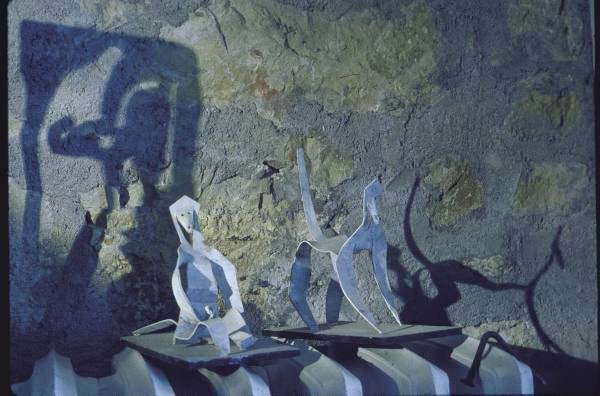
We might adapt for the artist the joke about there being nothing more dangerous than implements of war in the hands of generals. In the same way, there is nothing more dangerous than justice in the hands of judges, and a paintbrush in the hands of a painter.
Just think of the danger to society! But today we haven't the heart to expel the painters and poets from society because we refuse to admit to ourselves that there is any danger in keeping them in our midst. It is my misfortune — and probably my delight — to use things as my passions tell me. What a miserable fate for a painter who adores blondes to have to stop himself putting them into a picture because they don't go with the basket of fruit!

How awful for a painter who loathes apples to have to use them all the time because they go so well with the cloth. I put all the things I like into my pictures. The things — so much the worse for them; they just have to put up with it. In the old days pictures went forward toward completion by stages. Every day brought something new. A picture used to be a sum of additions. In my case a picture is the sum of destructions. I do a picture — then I destroy it. In the end, though, nothing is lost: the red I took away from one place turns up somewhere else.
It would be very interesting to preserve photographically, not the stages, but the metamorphoses of a picture. Possibly one might then discover the path followed by the brain in materializing a dream. But there is one very odd thing — to notice that basically a picture doesn't change, that the first "vision" remains almost intact, in spite of appearances.

I often ponder on a light and a dark when I have put them into a picture; I try hard to break them up interpolating a color that will create a different effect. When the work is photographed, I note that what I put in to correct my first vision has disappeared, and that, after all, the photographic image corresponds with my first vision before the transformation I insisted on.
A picture is not thought out and settled beforehand. While it is being done it changes as one's thoughts change. And when it is finished, it still goes on changing, according to the state of mind of whoever is looking at it. A picture lives a life like a living creature, undergoing the changes imposed on us by our life from day to day. This is natural enough, as the picture only lives through the man who is looking at it.

At the actual time that I am painting a picture I may think of white and put down white. But I can't go on working all the time thinking of white and painting it. Colors, like features, follow the changes of the emotions. You've seen the sketch I did for a picture with all the colors indicated on it. What is left of them? Certainly the white I thought of and the green I thought of are there in the picture, but not in the places I intended, nor in the same quantities. Of course, you can paint pictures by matching up different parts of them so that they go quite nicely together, but they'll lack any kind of drama.
I want to get to the stage where nobody can tell how a picture of mine is done. What's the point of that? Simply that I want nothing but emotion to be given off by it.
Work is a necessity for man.
A horse does not go between the shafts of its own accord.
Man invented the alarm clock.

When I begin a picture, there is somebody who works with me. Toward the end, I get the impression that I have been working alone - without a collaborator.
When you begin a picture, you often make some pretty discoveries. You must be on guard against these. Destroy the thing, do it over several times. In each destroying of a beautiful discovery, the artist does not really suppress it, but rather transforms it, condenses it, makes it more substantial. What comes out in the end is the result of discarded finds. Otherwise, you become your own connoisseur. I sell myself nothing.
Actually, you work with few colors. But they seem like a lot more when each one is in the right place.
Abstract art is only painting. What about drama?

There is no abstract art. You must always start with something. Afterward you can remove all traces of reality. There's no danger then, anyway, because the idea of the object will have left an indelible mark. It is what started the artist off, excited his ideas, and stirred up his emotions. Ideas and emotions will in the end be prisoners in his work. Whatever they do, they can't escape from the picture. They form an integral part of it, even when their presence is no longer discernible. Whether he likes it or not, man is the instrument of nature. It forces on him its character and appearance.
In my Dinard pictures and in my Pourville pictures I expressed very much the same vision. However, you yourself have noticed how different the atmosphere of those painted in Brittany is from those painted in Normandy, because you recognized the light of the Dieppe cliffs. I didn't copy this light nor did I pay it any special attention. I was simply soaked in it. My eyes saw it and my subconscious registered what they saw: my hand fixed the impression. One cannot go against nature. It is stronger than the strongest man. It is pretty much to our interest to be on good terms with it! We may allow ourselves certain liberties, but only in details.
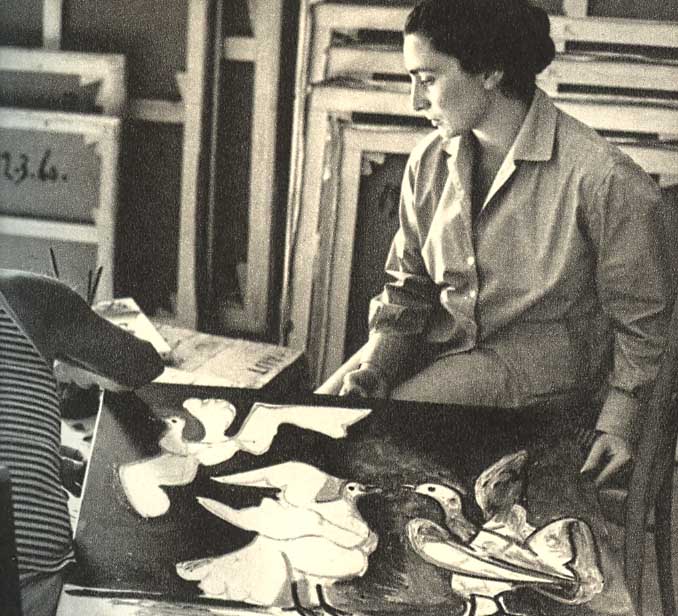
Nor is there any "figurative" and "non-figurative" art. Everything appears to us in the guise of a "figure." Even in metaphysics ideas are expression by means of symbolic "figures." See how ridiculous it is then to think of painting without "figuration." A person, an object, a circle are all "figures"; they react on us more or less intensely. Some are nearer our sensations and produce emotions that touch our affective faculties; others appeal more directly to the intellect. They all should be allowed a place because I find my spirit has quite as much need of emotion as my sense. Do you think it concerns me that a particular picture of mine represents two people? Though these two people once existed for me, they exist no longer. The "vision" of them gave me a preliminary emotion; then little by little their actual presences became blurred; they developed into a fiction and then disappeared altogether, or rather they were transformed into all kinds of problems. They are no longer two people, you see, but forms and colors: forms and colors that have taken on, meanwhile, the idea of two people and preserve the vibration of their life.
I deal with painting as I deal with things, I paint a window just as I look out of a window. If an open window looks wrong in a picture, I draw the curtain and shut it, just as I would in my own room. In painting, as in life, you must act directly. Certainly, painting has its conventions, and it is essential to reckon with them. Indeed, you can't do anything else. And so you always ought to keep an eye on real life.

The artist is a receptacle for emotions that come from all over the place; from the sky, from the earth, from a scrap of paper, from a passing shape, from a spider's web. That is why we must not discriminate between things. Where things are concerned there are no class distinctions. We must pick out what is good for us where we can find it - except from our own works. I have a horror of copying myself.
The painter goes through states of fullness and evaluation. That is the whole secret of art, I go for a walk in the forest of Fontainebleau. I get 'green' indigestion. I must get rid of this sensation into a picture. Green rules it. A painter paints to unload himself of feelings and visions. People seize on painting to cover up their nakedness. They get what they can wherever they can. In the end I can't believe they get anything at all. They've simply cut a coat to the measure of their own ignorance. They make everything, from God to a picture, in their own image. That is why the picture-hook is the ruination of a painting — a painting which has always a certain significance, at least as much as the man who did it. As soon as it is brought and hung on a wall, it takes on quite a different kind of significance, and the painting is done for.

Academic training in beauty is a sham. We have been deceived, but so well deceived that we can scarcely get back even a shadow of the truth. The beauties of the Parthenon, Venuses, Nymphs, Narcissuses are so many lies. Art is not the application of a canon of beauty but what the instinct and the brain can conceive beyond any canon. When we love a woman we don't start measuring her limbs. We love with our desires — although everything has been done to try and apply a canon even to love.
The Parthenon is really only a farmyard over which someone put a roof; colonnades and sculptures were added because there were people in Athens who happened to be working, and wanted to express themselves. It's not what the artist does that counts, but what he is. Cézanne would have never interested me one bit if he had lived and thought like Jacques Emile Blanche, even if the apple he painted had been ten times as beautiful. What forces our interest is Cézanne's anxiety — that's Cézanne's lesson; the torments of Van Gogh — that is the actual drama of the man. The rest is a sham.

Everyone wants to understand art. Why not try to understand the songs of a bird? Why does one love the night, flowers, everything around one, without trying to understand them? But in the case of a painting people have to understand. If only they would realize above all that an artist works of necessity, that he himself is only a trifling bit of the world, and that no more importance should be attached to him than to plenty of other things which please us in the world, though we can't explain them. People who try to explain pictures are usually barking up the wrong tree. Gertrude Stein joyfully announced to me the other day that she had at last understood what my picture of three musicians was meant to be. It was a still life!
How can you expect an onlooker to live a picture of mine as I lived it? A picture comes to me from miles away: who is to say from how far away I sensed it, saw it, painted it; and yet the next day I can't see what I've done myself. How can anyone enter into my dreams, my instincts, my desires, my thoughts, which have taken a long time to mature and to come out into the daylight, and above all grasp from them what I have been about - perhaps against my own will?
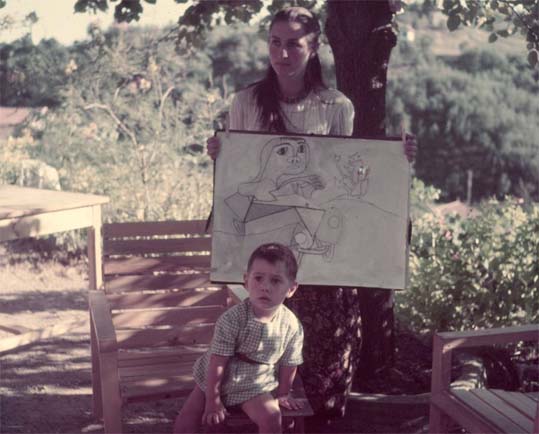
With the exception of a few painters who are opening new horizons to painting, young painters today don't know which way to go. Instead of taking up our researches in order to react clearly against us, they are absorbed with bringing the past back to life — when truly the whole world is open before us, everyone waiting to be done, not just redone. Why cling desperately to everything that has already fulfilled its promise? There are miles of painting "in the manner of"; but it is rare to find a young man working in his own way.
Does he wish to believe that man can't repeat itself? To repeat is to run counter to spiritual laws, essentially escapism.

I'm no pessimist, I don't loathe art, because I couldn't live without devoting all my time to it. I love it as the only end of my life. Everything I do connected with it gives me intense pleasure. But still, I don't see why the whole world should be taken up with art, demand its credentials, and on that subject give free rein to his own stupidity. Museums are just a lot of lies, and the people who make art their business are mostly imposters. I can't understand why revolutionary countries should have more prejudices about art than out-of-date countries!
We have infected the pictures in museums with all our stupidities, all our mistakes, all our poverty of spirit. We have turned them into petty and ridiculous things. We have been tied up to a fiction, instead of trying to sense what inner life there was in the men who painted them. There ought to be an absolute dictatorship...a dictatorship of painters...a dictatorship of one painter... to suppress all those who have betrayed us, to suppress the cheaters, to suppress the tricks, to suppress the mannerisms, to suppress charms, to suppress history, to suppress a heap of other things. But common sense always gets away with it. Above all, let's have a revolution against that! The true dictator will always be conquered by the dictatorship of common sense...and maybe not!
1935
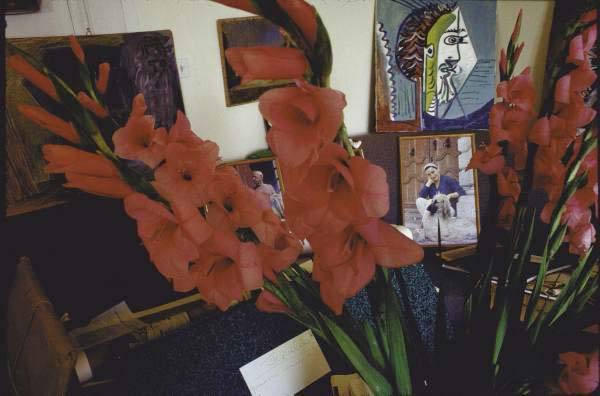
The literary ideas of a painter are not at all the same ideas as the literary ideas of a writer. The egotism of a painter is entirely a different egotism than the egotism of a writer. The painter does not conceive of himself as existing in himself, he conceives himself as a reflection of the objects he has put into his pictures and he lives in the reflections of his pictures, a writer, a serious writer, conceives himself as existing by and in himself, he does not at all live in the reflection of his books, to write he must first of all exist in himself, but for a painter to be able to paint, the painting must first of all be done, therefore the egotism of a painter is not at all the egotism of a writer, and this is why Picasso who was a man who only expressed himself in painting had only writers as friends.
- Gertrude Stein
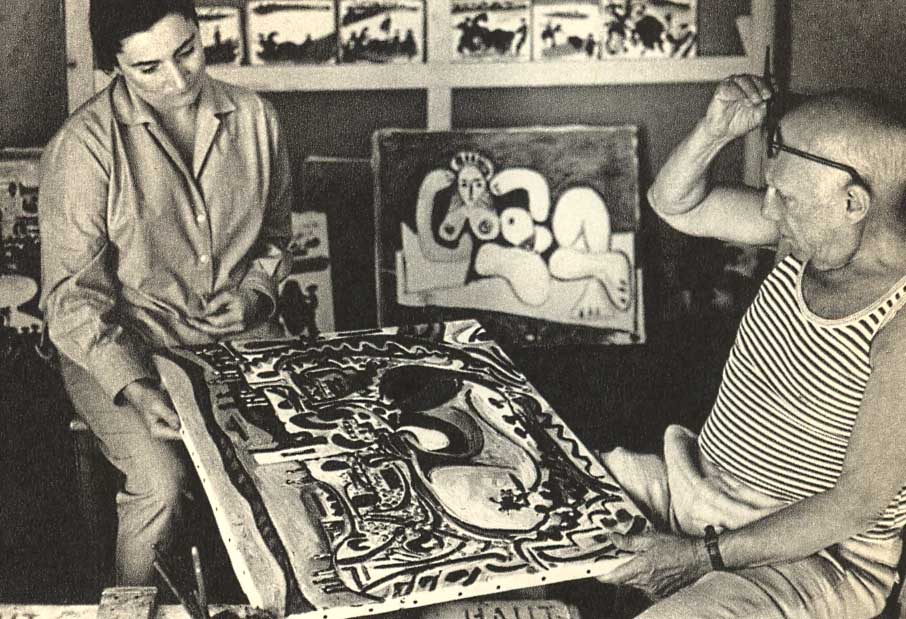
 gertrude stein,
gertrude stein,  pablo picasso,
pablo picasso,  paul cézanne
paul cézanne 




























